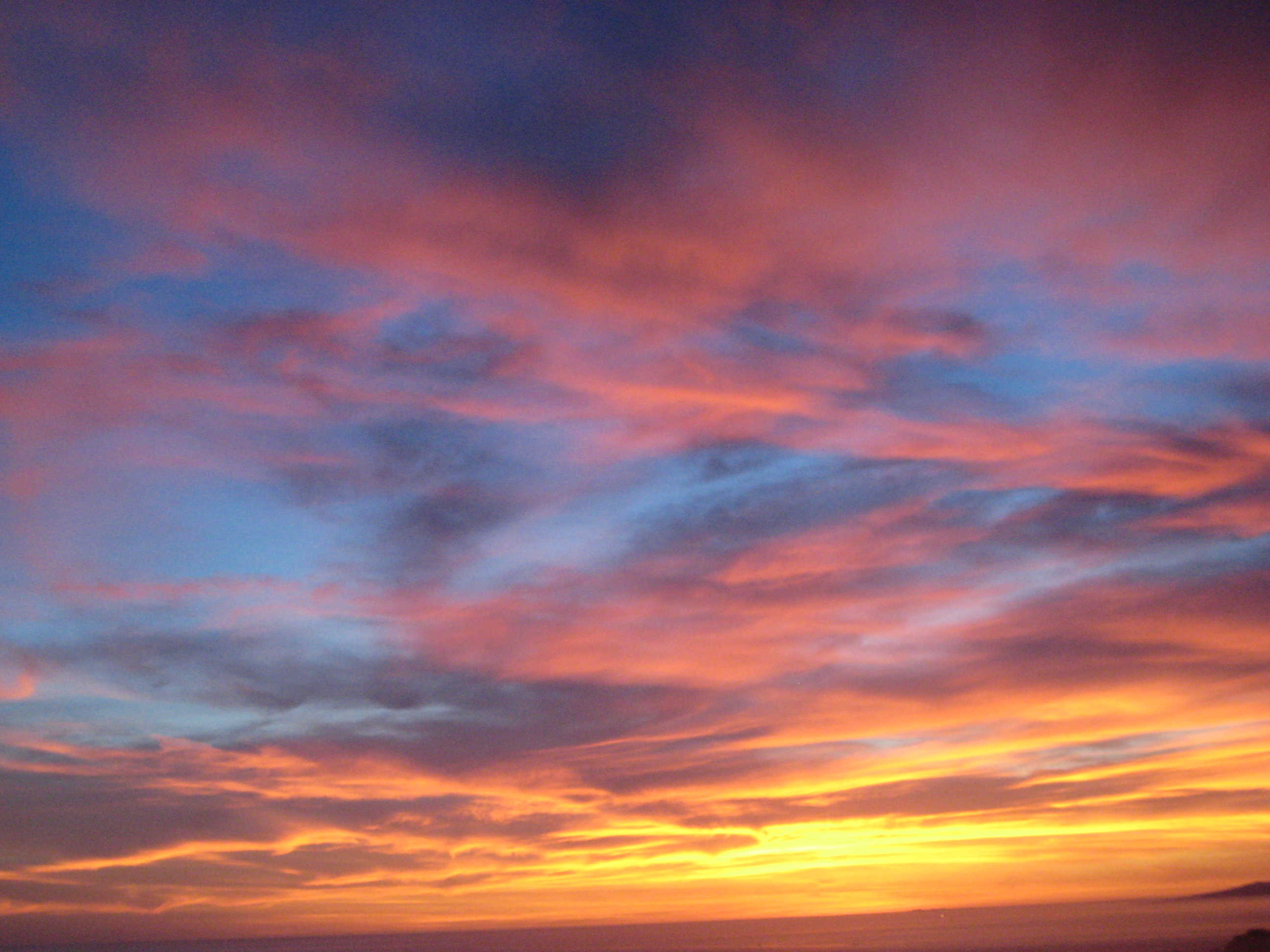Nature's Palette: Natural Airbrush
Share




We owe some of our most spectacular atmospheric phenomena to various types of scatterings: blue skies, colorful sunsets, and white clouds, among others. We see the sky colored because our atmosphere interacts with the sunlight passing through it.
The blue color of the sky is due to Rayleigh scattering*. As light moves through the atmosphere, most of the longer wavelengths pass straight through; because the blue light is the shortest wavelength, these waves are the most affected by the particles in our atmosphere. The resulting color, which appears like a pale blue, is actually a mixture of all the scattered colors, mainly blue and green.
On the other hand, glancing toward the Sun, the colors that were not scattered away—the longer wavelengths, such as red and yellow light—are directly visible, giving the Sun a yellowish hue. Viewed from outer space, however, the sky is black and the Sun is white.
Airborne Cotton Candy
Clouds are made of billions of small water droplets and ice crystals; so why are they white? Cloud particles are large enough to scatter any color of light that falls on them. The repeated scattering of light, known as multiple scattering, results in the white light because enough light of all colors is scattered to your eye.
A dark cloud does not always mean rain; clouds appear dark if they are in the shadow of other clouds, or sometimes, if the top of the same cloud produces a shadow on itself. There is also a darker look to some clouds if the background color is bright sunlight, making a great contrast.

Rainbow Sunsets
The immense variation in the colors of sunsets depends on the concentration of atmospheric particles; the size and concentration of these particles in the path of incoming sunlight determine the type of sunset observed.
When sunlight encounters very few particles in the atmosphere, most wavelengths of light reach the observer’s eyes with almost equal intensity. The reduced scattering produces the white or yellow sunsets commonly observed in the Rocky Mountains, where the atmosphere typically contains fewer dust and assorted particles.
At sunset, the Sun’s rays have much farther distance to travel through the atmosphere to reach the observer’s eyes; more than 30 times the distance at midday. The volume of air through which sunlight must pass is significantly greater than when the Sun is high in the sky. The Rayleigh scattering effect is therefore increased, removing virtually all blue light from the direct path to the observer. The remaining un-scattered light is mostly of a longer wavelength giving the Sun an orange-red appearance.

Red sunsets are often observed from a beach because of the high concentration of slat particles suspended in the air over the oceans. These particles effectively scatter shorter wavelengths of light, producing red sunsets. Dust and ash particles injected into the atmosphere by volcanic eruptions can also lead to red sunsets.
After sunset, the reddened evening sunlight illuminates small particles in higher altitudes of 10-20 km above the ground, in the lower stratosphere. This reddish light combines with scattered blue light giving the reddish-purple color of the late evening sky.
*Published in PSC Newsletter, 2nd School Semester 2012/2013 issue.
ٌٌReferences
webexhibits.org
hotword.dictionary.com
britannica.com
oceans.taraexpeditions.org
dailymail.co.uk
ehow.com
earthweek.com
incrediblethings.com
blog.lib.umn.edu
lifeslittlemysteries.com
whyzz.com
hiltonpond.org
sciencefocus.com